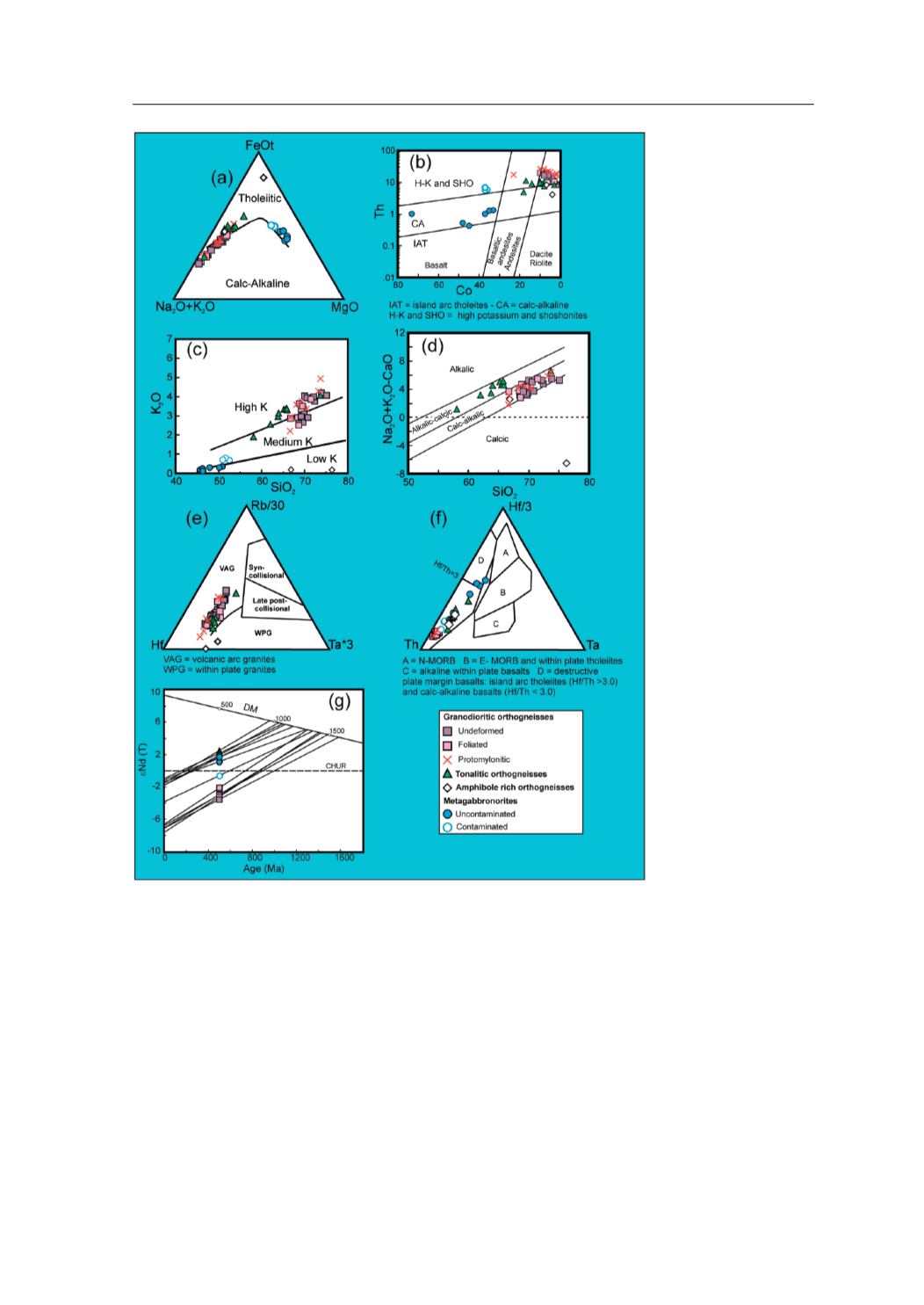
tions of a back-arc, a fore-arc, or the magmatic
arc itself (Arenas
et al.
, 1986). This interpretation
has not changed to this day, as many subsequent
works have interpreted the origin of the Upper
Units in the context of a peri-Gondwanan mag-
matic arc. The polymetamorphic nature of this
terrane has also been demonstrated, first it was
affected by a tectonothermal event related to
the activity of the magmatic arc, and then by a
collisional tectonothermal event present in any
member of the Upper Units, but with different
characteristics depending on the intensity of de-
formation and metamorphism.
Intermediate Pressure Upper Units
Lithologies and chemical composition
In the Órdenes Complex, the Betanzos Unit
is constituted by a siliciclastic turbiditic series of
greywackes with thin alternations of conglom-
erates, green phyllites and calc-silicate layers,
which in the lower part of the unit ranges to a
series of black metapelites and quartzites (Díaz
García, 1990; Fuenlabrada
et al.
, 2010). This suc-
cession is intruded by abundant diabase dykes of
metric size. The maximum depositional age of
the greywackes has been calculated at
c.
530-550
Ma (Middle Cambrian) using U-Pb dating of de-
39
3. GEOLOGICAL FRAMEWORK
Fig. 18.
Geochemical
data of metaigneous
rocks from the Corre-
doiras massif (IP Upper
Units). (
a
) AFM diagram
showing the tholeiitic
and calc-alkaline fields
after Irvine and Bara-
gar (1971). (
b
) Th-Co
discrimination diagram
(Hastie
et al.
, 2007). (
c
)
SiO
2
-K
2
O diagram (Pec-
cerillo and Taylor, 1976).
(
d
) Na
2
O+K
2
O-CaO
v.
SiO2 plot (Frost
et al.,
2001) showing the fields
for the alkalic, alkalic-cal-
cic, calc-alkalic and calcic
rock series. (
e
) Rb-Hf-Ta
diagram (Harris et al.,
1986). (
f
) Hf-Th-Ta dia-
gram (Wood, 1980). (
g
)
TDM model ages (De-
Paolo, 1981) calculated
with
H
Nd values at 492
Ma. After Andonaegui
et
al.
(2012).








